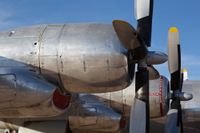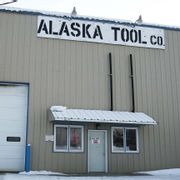
From skyscraper construction to home appliance production, welding offers a wide variety of applications in the modern world. But while joining metals together with heat is commonly practiced today, this technique hasn’t always been around. This form of metalwork is the result of industrial developments and technological innovations that have occurred throughout centuries. To illustrate how far this practice has come, here is a brief look at the history of welding.
How Has Welding Evolved Over the Years?
The Bronze Age and the Inception of Welding
Although examples of basic metallurgy can be traced throughout numerous ancient civilizations, the first evidence of welding practices didn’t emerge until about 1000 BC during the Bronze Age. At this time, a craftsperson used pressure to join bronze together to create boxes and ornaments. Later in the Iron Age, Mediterranean cultures began fusing iron to create various tools. Several centuries later, in the Middle Ages, blacksmiths refined the art by joining iron together through hammering.
Emergence of Electricity
The discovery of acetylene gas in the 19th century gave welders an adjustable source of heat that helped refine the metal fabrication process. Soon, this practice was overshadowed by the promise of electricity. Specifically, electric generators helped give way to the creation of arc welding—a process in which an electric arc is created between metal and an electrode. This arc provided an improved heat source that allowed for more versatility in working with iron and lead.
Welding for the War
 During World War I, the need for rapid ship and aircraft production supported the development of welding across the world. Between 1919 and 1940, several innovations in metal fabrication were born, including alternating current, automatic welding, and gas tungsten arc welding.
During World War I, the need for rapid ship and aircraft production supported the development of welding across the world. Between 1919 and 1940, several innovations in metal fabrication were born, including alternating current, automatic welding, and gas tungsten arc welding.
These techniques made it possible for nations to seamlessly produce defense crafts and improve their overall design. Gas tungsten arc welding made a considerable impact, as it allowed metalworkers to join stainless steel, aluminum, and magnesium—all metals that helped advance the fighter plane.
Harnessing Heat
In recent decades, new ways of creating and unifying heat helped enhance welding capabilities. In particular, the arrival of laser welding allowed professionals to concentrate heat so precisely that it became possible to easily cut metal. These tools eventually led to the development of automated fabrication processes.
The Alaska Tool Company in Fairbanks, AK, is backed by skilled specialists and advanced tools to provide comprehensive metal fabrication services. From custom metal work to heavy machinery repair, these experts can handle projects of any size with speed, precision, and reliability. Visit this shop online to learn more about their capabilities or call (907) 479-5354 to discuss your project needs with a specialist.
About the Business
Have a question? Ask the experts!
Send your question

